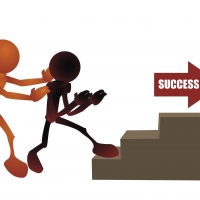Development and Marketing—Can't We All Just Get Along?

When building software for sale, it may seem that software development managers (SDM) and product marketing managers (PMM) should get along great; after all, they are two sides of the same coin. The SDM and his team build the software; the PMM and his team find people to buy it.
Truth be told, they sometimes do get along, but when they don’t, there is a primary reason why—SDMs plan and schedule projects from the beginning to the end; PMMs plan and schedule projects from the end and work back to the beginning.
They are both right, but this difference can be a major source of conflict between those developing the software and those marketing it.
When building software, the SDM (or project manager) assesses the scope of the work to be done and estimates the needed number of people, length of time, and amount of money needed to complete the project. Then, once the project start date is established, the SDM calculates the completion date based on these estimates.
The marketing person, on the other hand, makes a business decision as to when the software should be released based on corporate strategic direction, competitive market forces, and professional judgment. Then, once the release date is established, the PMM works backward from the release date to define when needed marketing tasks should begin and end.
The problems and infighting begin when these two planning methodologies generate incompatible schedules and end dates. When conflict occurs, if the company isn’t careful, bad things can happen—such as the software's being released to the public before its ready.
This conflict can place an incredible amount of pressure on the SDM because he is caught in the middle between the developers who want the code done right and the marketing people who want the code done quickly.
The issue for the PMM is that selling software is much harder than it sounds, and he is also caught in the middle—between the SDM who needs more time to finish the software and the sales team who wants to begin selling the product.
All that said, if handled correctly, conflict can be a good thing. The reason is that conflicting goals and issues can spawn results such as removing unneeded features, employing techniques to enhance developer productivity, and dividing large releases into multiple smaller releases, thus reducing the risk of each rollout.
The trick here is for the SDM and PMM to act as a team—not combatants—for the good of company. The SDM may have to agree to finish writing needed software documentation after the software is released, or the PMM must be willing to either change the release date or reduce the feature list. Both sides must remember that the goal is company profitability—not personal agendas.

